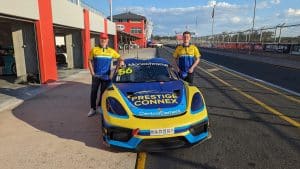Market Relevance. It’s become a buzz-phrase in the motorsport industry for racing categories trying to justify making certain decisions, mainly in terms of structuring technical regulations in a way that encourages manufacturer involvement.
Indeed, market relevance has long been a core component of motor racing, because manufacturers feel that if they are to derive value from the sport, there needs to be a resemblance between what’s on the track, and what’s sold in the showroom.
The other side of market relevance is the transfer of technology – the development of innovations that filter down to automotive consumer products (road cars) or are adapted for other industries.
The height of the motorsport “innovation era” was the late 1980s and early 1990s. In Formula 1, we had turbocharged engines pumping out insane amounts of horsepower, and hi-tech active suspension systems enabling the cars to reach eye-watering corner speeds.
Here in Australia, the Group A Touring Car formula produced something of a technological arms race, which culminated in the domination of the Australian Touring Car Championship and Bathurst 1000 by Nissan’s R32 GT-R, a technological tour-de-force with its all-wheel-drive, four-wheel-steering and advanced turbocharged motor.
Of course, many of the developments introduced during this era had a finite lifespan. In the case of Formula 1, they were banned by the regulators. In the case of the ATCC, the V8 touring car formula was introduced, taking away the diversity of machinery and constraining the scope for innovation.
For the sake of motorsport as a form of entertainment, these changes were necessary to bring the field closer together, but they somewhat stifled the use of the sport as a breeding ground for new ideas… or so we thought.
You see, when the rules for a motor racing category are constricted, it only serves to make the brightest minds in the industry stand out even more. As the room for improvement becomes smaller and smaller, the only way to gain an advantage over the opposition is to become cleverer and cleverer.
So while the technical gains may be somewhat less substantial than they were in the past, the advancements on the human side have been as healthy as ever. In Formula 1, there are geniuses like Ross Brawn and Adrian Newey. And in Australia, there is Oscar Fiorinotto.
Oscar was a successful engineer in V8 Supercars during the late 1990s and early 2000s, at a time when every passing year saw the technical regulations tightened as the regulators chased parity between manufacturers and teams – he engineered drivers such as Greg Murphy and Craig Lowndes, and was technical director for the Team Dynamik V8 Supercar operation during the introduction of the Project Blueprint parity regulations in 2003.
Now a successful business owner, Oscar has proven that there is absolutely still a place for technological innovations in motorsport that can transfer into other industries. His Supashock business started out developing race car dampers, but now provides advanced vibration and motion control technology to a range of other industries including automotive aftermarket, mining, defence and autonomous vehicles.
But more than that, Oscar has used the Supashock business to demonstrate the value of motorsport as a human development tool. People who have worked in the motorsport industry are intrinsically passionate, dedicated, competitive and have an outstanding work ethic. And in an environment where funds are often tight, they probably have lower pay expectations as well!
And so I’m proud to announce that Chequered Flag Media has completed a deal to manage Supashock’s media and public relations, not just in the motorsport domain but in all the other industries where the company is active.
For someone who has built a career and a business specialising in the motorsport industry, it will be a step outside my comfort zone, but in many ways it epitomises exactly what I’ve just talked about – people learning to push the boundaries in the competitive, cut-throat motorsport environment and then translating those skills to other areas. And let’s face it, the fundamentals of communication and PR are constant, regardless of the industry.
It’s the start of a new period of diversification for CFM, but it’s one I’m very excited about… bring it on!




